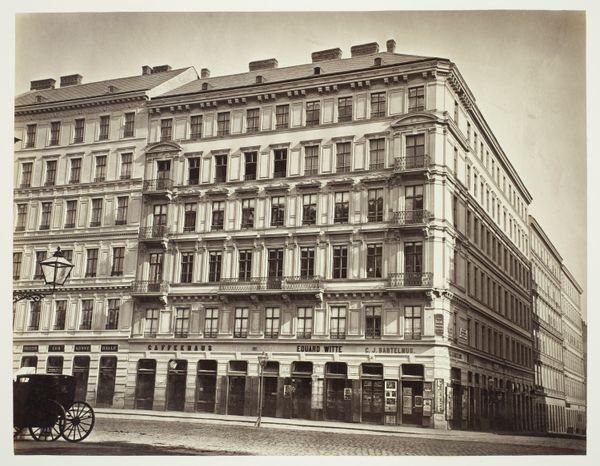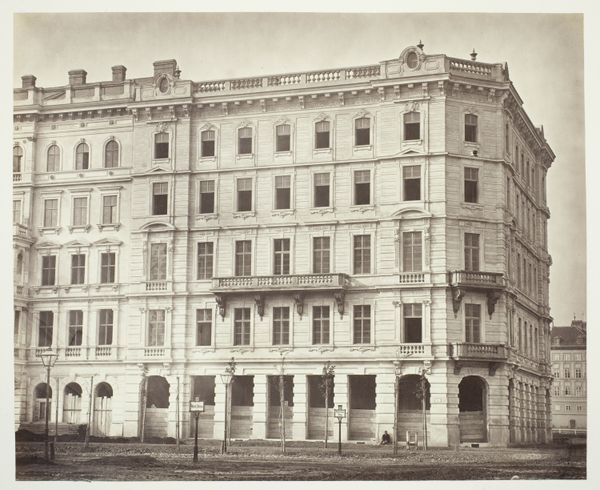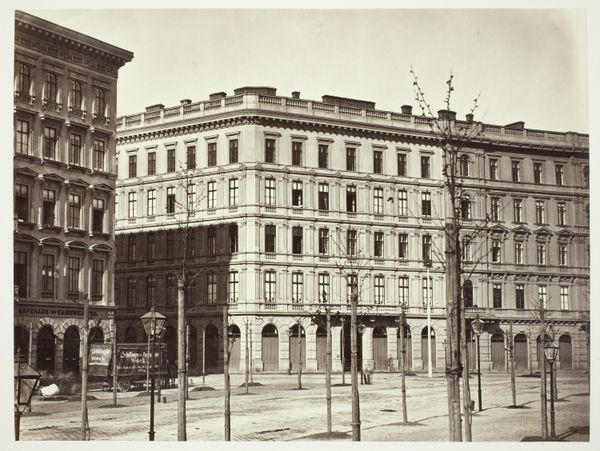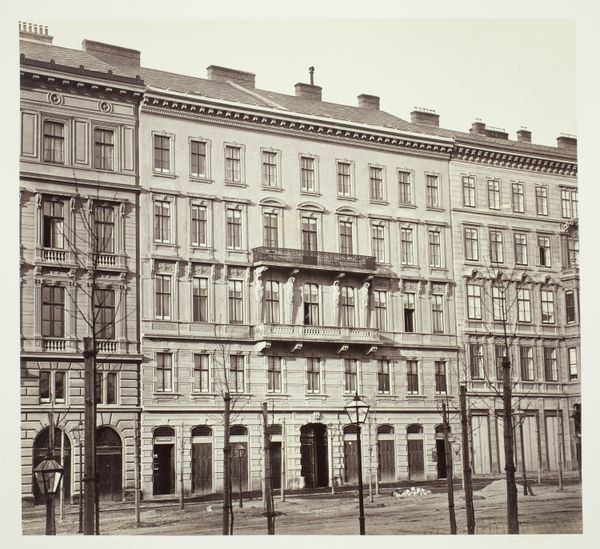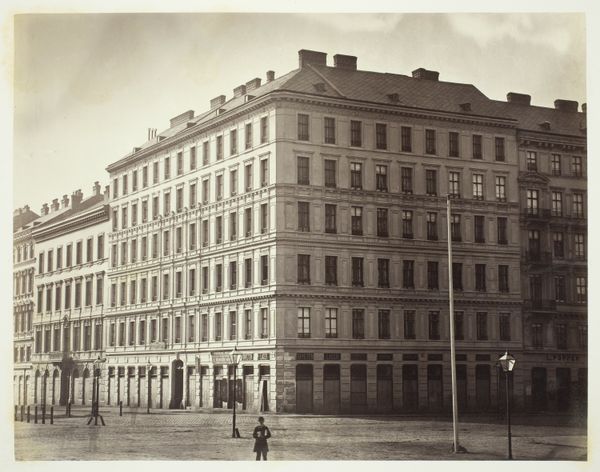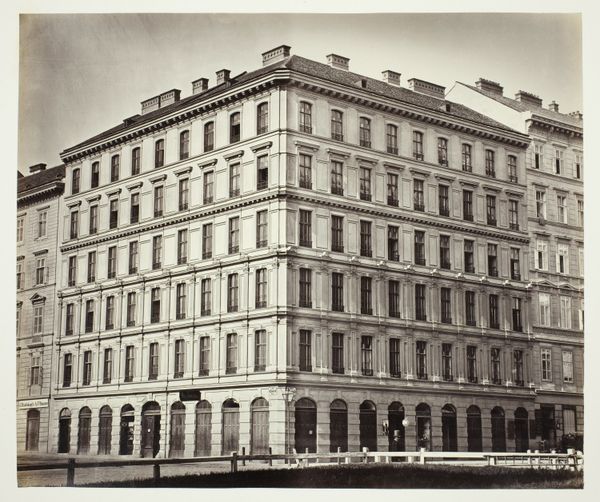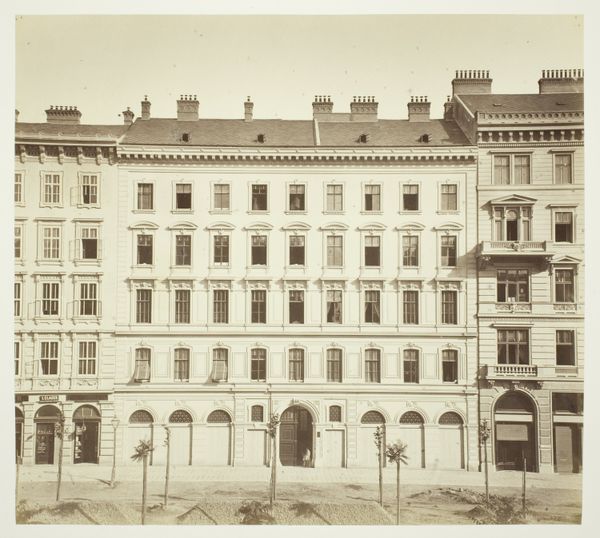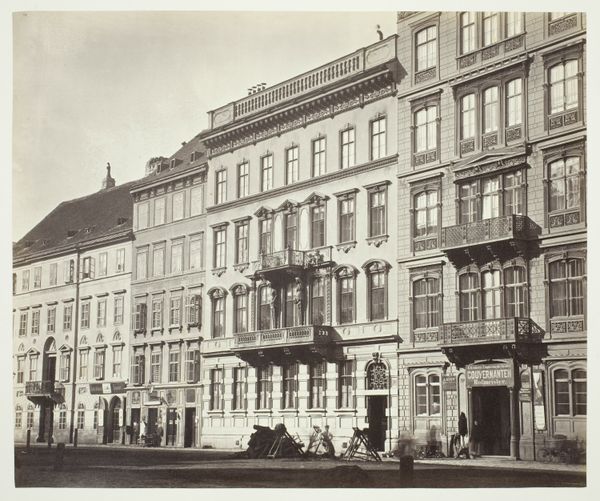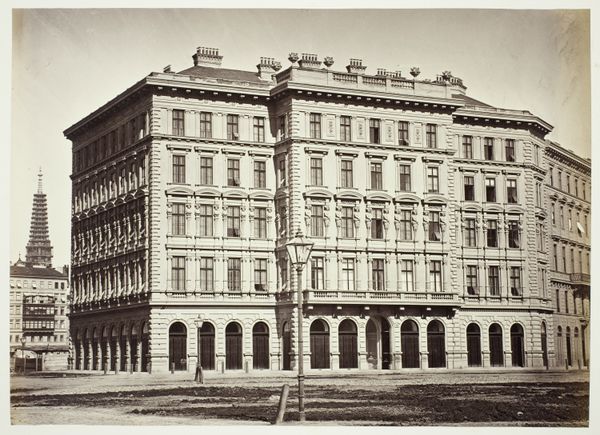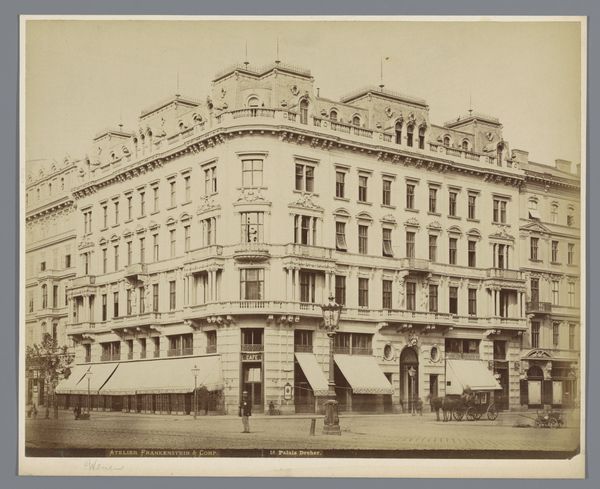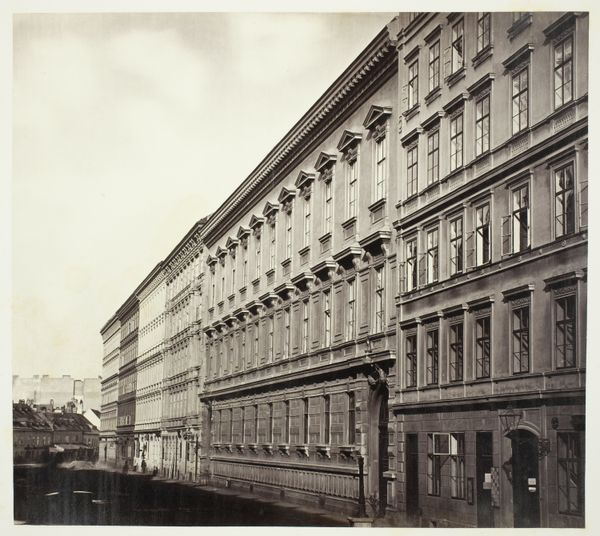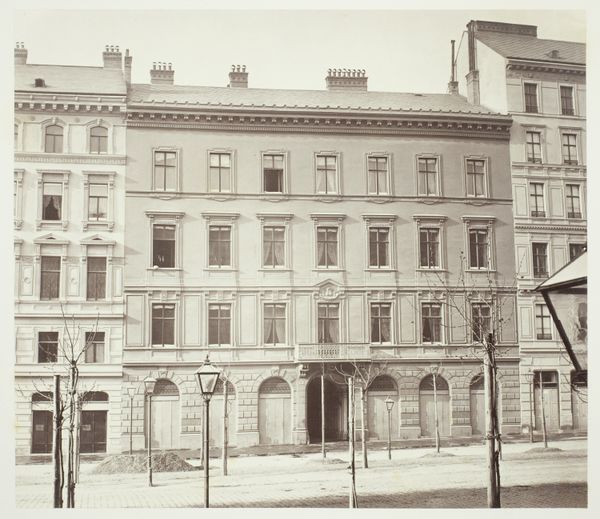
Rudolfs Platz No. 6, Zinshaus des Freyherrn J. von Mayer c. 1860s
0:00
0:00
print, photography
#
print photography
#
16_19th-century
# print
#
wedding photography
#
photography
#
historical photography
#
monochrome photography
#
cityscape
#
realism
Dimensions: 25.9 × 33.5 cm (image/paper); 42.7 × 61.2 cm (album page)
Copyright: Public Domain
Editor: Here we have "Rudolfs Platz No. 6, Zinshaus des Freyherrn J. von Mayer," a photographic print from the 1860s, currently housed at The Art Institute of Chicago. It depicts an apartment building, captured with a striking clarity. What intrigues me is how ordinary the subject seems, yet the photograph itself possesses an undeniable gravitas. What do you make of it? Curator: It's a fascinating example of early photographic technology applied to the documentation of urban space and the material realities of burgeoning capitalism. This image allows us to consider the labor involved, from the mining of materials used to produce the photographic paper and chemicals to the construction of the building itself. Note the repetitive, almost mechanical nature of the architectural details. Does it not mirror the processes of industrial production burgeoning at the time? Editor: I see what you mean! The rows of identical windows…it's like a factory facade turned residential. So, are you suggesting that the image reveals the commodification of living spaces? Curator: Precisely! Think about who could afford to live in a "Zinshaus des Freyherrn" - a tenement building owned by nobility. Photography, though ostensibly objective, here subtly reinforces existing social hierarchies, doesn't it? The photographic process itself—its chemical composition, its reproducibility—was itself a new commodity rapidly transforming social perceptions. Editor: That makes me look at the building differently. The "Realism" of the photograph highlights very unreal social stratifications. Thank you! Curator: And it underscores how photographic representation, seemingly objective, is inherently embedded within a web of material and economic relationships. A building becomes more than just bricks and mortar, it embodies an entire mode of production and social power. It certainly gives one pause to contemplate the implications of photography, both then and now.
Comments
No comments
Be the first to comment and join the conversation on the ultimate creative platform.
